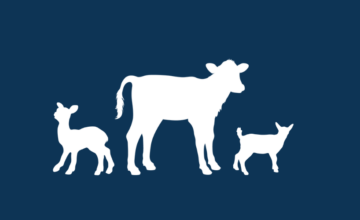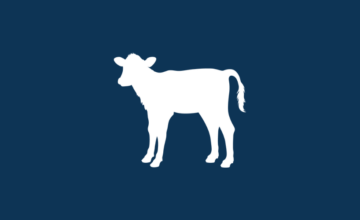Understanding the Fat in your Milk Replacer
- Aug 12, 2016
- By Grober Nutrition
- In Canada, USA
Fat digestion in the young calf
Commercial milk replacers are often compared and evaluated based on the percentage of protein and fat on the label. Discussion rarely delves into what makes up the components of fat and its effects on digestion, absorption or growth. Fats are comprised of short chain, medium chain and long chain fatty acids. The length of the chain is determined by its structure and the number of carbon atoms (C) that are present within that structure. That structure is what determines how it is digested and absorbed. Medium chain fatty acids can be absorbed directly from the small intestine to the liver where it is converted into available energy. Long chain fatty acids need bile salts for emulsification and micelle formation – bile salts are in very low production in the young calf. Initially, the newborn calf will rely on lipase present in their saliva for fat digestion. The lipase produced in saliva will breakdown short and medium chain fatty acids . Lipases in the pancreas are formed in the second week of life. These pancreatic lipases are needed to breakdown the long chain fatty acids.
Short vs Medium vs Long- what they are and what they do
Butyrate is an example of a short chain fatty acid. Butyrate is naturally produced in a ruminating animal and is instrumental in the increased development of the rumen papillae and weight. Furthermore, it promotes increased pancreatic secretions of enzymes that aid in digestion. Cow’s milk contains approximately 3.30% of butyric acid.
Coconut oil is unique in that it is formed mostly by medium chain fatty acids – 66% are C6-C12. Medium chain fatty acids have been linked to antimicrobial and antiviral properties and used widely in human foods and medicines for that purpose (Histov et al, 2004). Their passive absorption as described earlier allows for quick energy to be released from these fatty acids and used directly by the animal. Typically the digestibility of coconut oil in a young calf is very high (see Table 1). Cow’s milk contains approximately 3.50% of Lauric acid (C12), the chain most commonly found in coconut oil. In fact cow’s milk generally contains between 8-12% of medium chain fatty acids and 4% of short chain fatty acids as a percentage of the total fat content (Jensen, 2002).
Table 1 Fatty acid digestion in the young calf and the percentage of those fatty acids in common milk replacer fat sources.
| Fatty acid | Digestibility in a calf <3 wks | Lard | Tallow | Coconut oil |
| Lauric (C12) | 97.4% | 0% | 0% | 46% |
| Myristic (C14) | 91.5% | 1% | 3% | 21% |
| Palmitic (C16) | 80.6% | 25-28% | 26% | 9.1% |
| Stearic (C18) | 68.4% | 12-14% | 14% | 2.9% |
| Oleic (C18:1) | 94.2% | 44-47% | 47% | 7.2% |
Animal fats such as lard, tallow, vegetable oils and fish oils are mostly comprised of long chain fatty acids – animal fats are saturated which makes them more resistant to rancidity. While longer chain fatty acids (such as palmitic and stearic) are harder to digest for a young calf within the first few weeks, as lipases are formed in the pancreas, digestion of long chain fatty acids becomes more efficient. These fatty acids also serve as energy to the animal.
The presence of fatty acids in a milk replacer
Typical milk replacers are formulated using readily available animal fats, (eg. lard and tallow) which supply long chain fatty acids, and with little to no presence of medium chain fatty acids (see Figure 1). In order to provide a balanced fat ration for calves, long chain fatty acids are necessary as an energy source. They also have a functional role of ensuring that the fat within the milk replacer stays in a more solid form until the product is ready to be mixed with water. Medium chain fatty acids however, help to balance the ration. The ease with which medium chain fatty acids are digested is beneficial to the young calf to ensure that maximum energy is being allocated to growth and development.
Grober Nutrition
Recent Posts
Tags
Archives
- October 2024
- July 2024
- May 2024
- April 2024
- January 2024
- December 2023
- October 2023
- September 2023
- August 2023
- June 2023
- December 2022
- November 2022
- October 2022
- August 2022
- July 2022
- June 2022
- May 2022
- April 2022
- March 2022
- February 2022
- January 2022
- August 2021
- February 2021
- September 2020
- June 2020
- April 2020
- May 2017
- April 2017
- October 2016
- September 2016
- August 2016
- March 2016
- March 2015
- January 2015
- December 2014
- December 2013
- September 2013
- May 2013
- January 2013
- December 2012
- November 2012
- March 2012
- March 2011
- February 2011
- November 2010
- August 2010
- December 2009
- November 2009
- March 2009















